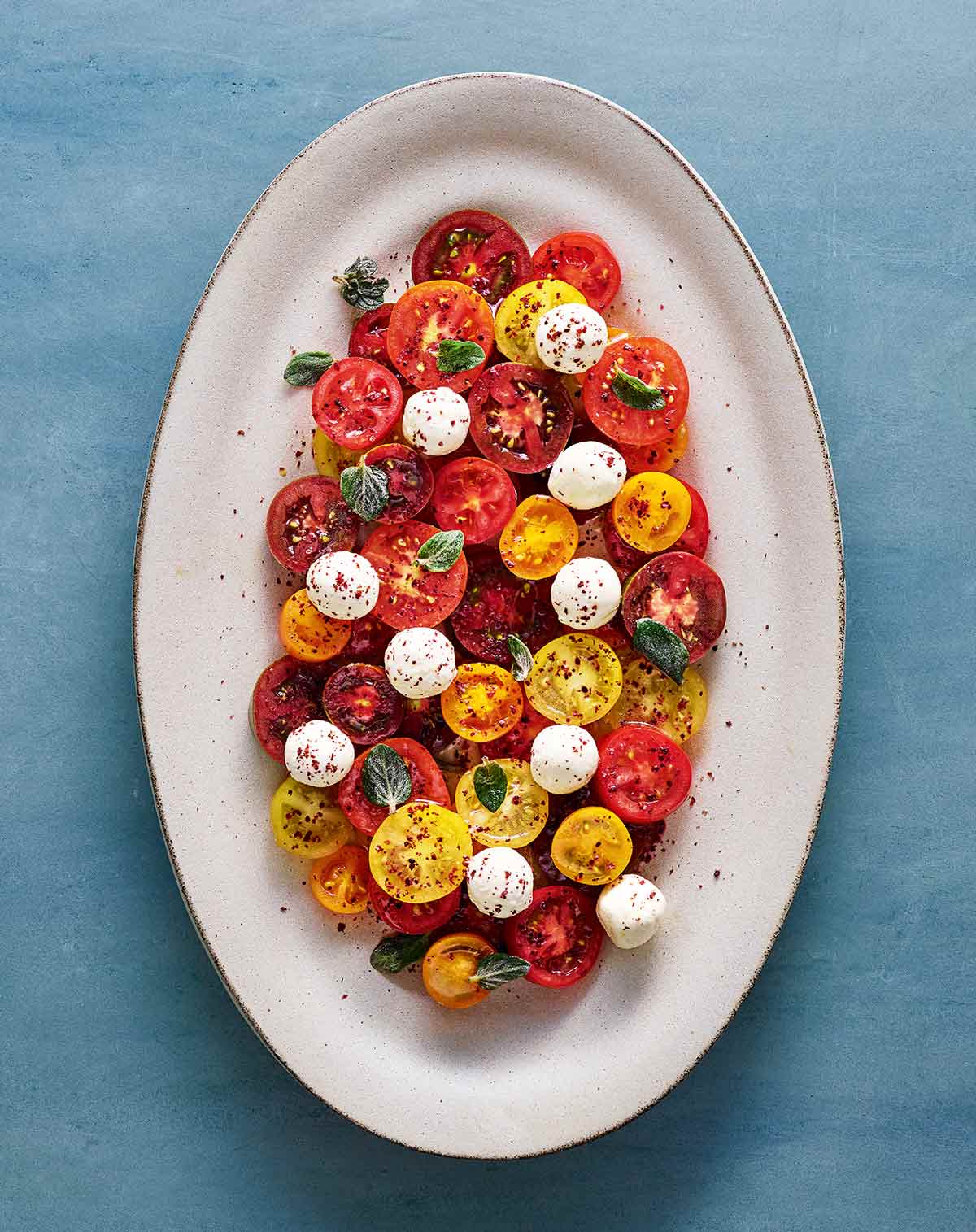
The perfectly ripe tomatoes of summer are cherished across the Mediterranean where eating them with various white cheeses is common, from Italian caprese to Greek horiatiki. In the Middle East, the Levant in particular, this is also the case, but it’s less structured.
If you don’t have or want to make labneh, you could substitute thin slices or small cubes of feta. You could also use soft goat cheese and either crumble it or form it into balls as you would the labneh.–Reem Kassis
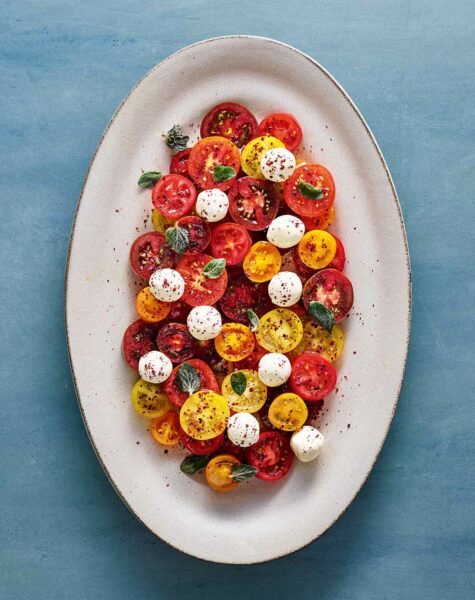
Tomato Salad with Labneh
Ingredients
- 3/4 cup (3 oz) labneh*, preferably homemade
- Scant 1 tablespoon za'atar (optional)
- 1 pound 10 ounces heirloom or good-quality slicing tomatoes or cherry tomatoes
- 2 tablespoons extra-virgin olive oil
- 1 clove garlic, very finely chopped
- 1 tablespoon fresh lemon juice
- 1 teaspoon sumac
- Flaky sea salt
- 2 to 3 sprigs fresh za’atar, leaves picked (or use fresh oregano or marjoram, or in a pinch, thyme)
- Bread, for serving
Instructions
- Line a sieve with paper towels and set over a bowl. Spoon the labneh into the sieve and allow to sit for about 1 hour at room temperature, until some of the liquid has drained and it is drier and easier to roll.
- Transfer to a bowl, add the za’atar blend, if using, and mix to combine.
- Line a plate with parchment paper. With lightly oiled hands, roll the labneh into balls the size of marbles and set on the plate. Cover with plastic wrap and refrigerate until ready to use.
☞ TESTER TIP: Wash and re-oil your hands after every 5 labneh balls so that the labneh doesn’t lose its shape.
- Slice the tomatoes into rounds 1/3 inch (1 cm) thick and arrange on a serving platter.
- In a small bowl, whisk together the olive oil, garlic, and lemon juice. Spoon the mixture over the sliced tomatoes. Sprinkle with the sumac and salt flakes.
- Top with the labneh balls and scatter with the fresh za’atar leaves. Serve with bread.
Notes
*What is a good substitute for labneh?
The tomatoes are the star of the show in this summer dish and any creamy counterpart helps them to shine. Feel free to use goat cheese, feta, or halloumi in place of the labneh.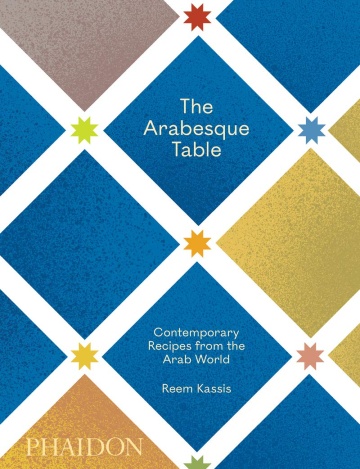
Explore More with AI
Nutrition
Nutrition information is automatically calculated, so should only be used as an approximation.
Recipe Testers’ Reviews
This summer tomato salad with labneh hit all the right notes. The tomatoes were sweet, the tangy goat cheese was crumbled on top, the dressing had a pop of acid from the lemon and sumac, the garlic added heat, and the sea salt balanced out the dish. Serving with crusty bread is a ‘must-do.” It sops up all that delicious juice the tomatoes give off after they marinate for a bit.
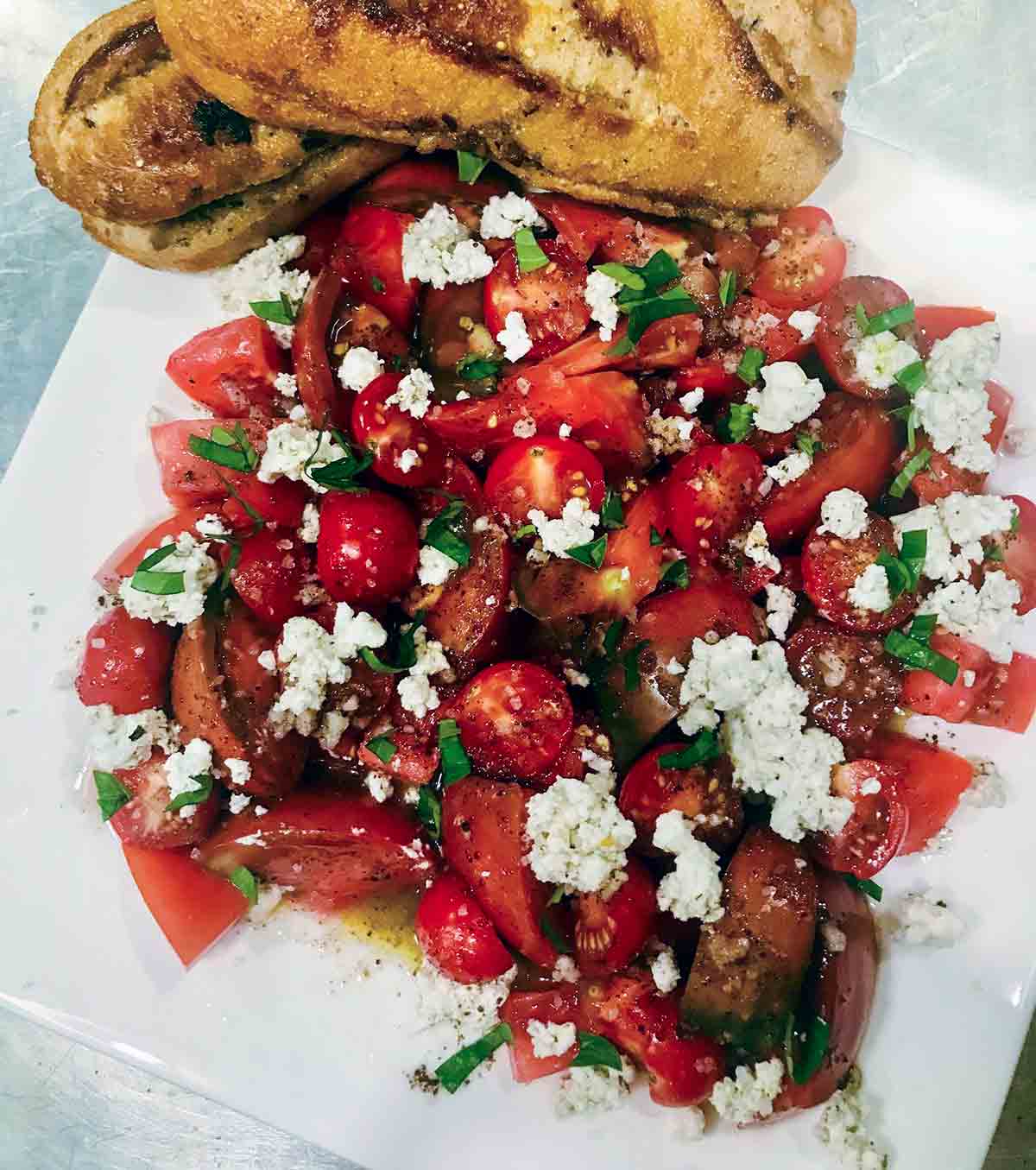
Next time I’ll make the dressing first so it can sit and mellow out the garlic a bit and let the sumac and lemon marry more. I’ll also let the goat cheese come to room temperature to better incorporate the za’atar. I’d only recommend making this during peak tomato season. This was a big hit with the family and I will be making this all summer.
I jumped at this recipe for tomato salad with labneh as the all-too-brief tomato season is just beginning here in northern Illinois. The market stands have some big Brandywines and Cherokee Purples (I peeled them), and from the store, we had the little Kumato tomatoes plus tiny yellow and orange ovals.
Though we enjoy the usual caprese, the tangy lemon and sumac vinaigrette was an unquestionably good departure. Instead of labneh or feta, I used halloumi because we adore the salty firm bite of it, and that shortens the prep time by a lot. Be judicial with the Maldon because the garlic, lemon, sumac, and halloumi already provide a strong saltiness.
Big homemade croutons of whatever bread you have leftover work well—we had a quarter loaf of seven-day-old Galician rye from a local bakery (Hewn in Evanston); ripping that into bits and pieces made for a satisfying Panzanella-like starter with fresh marjoram from the garden.
Using a mix of red, orange, and yellow cherry tomatoes straight from the farmers’ market and my garden, this tomato salad with labneh was a feast for the eyes as well as a delicious summer treat. Combining the sweet, ripe tomatoes with cheese and herbs and serving it with a warm baguette was like eating deconstructed bruschetta. A little cheese and a few tomatoes with a bit of bread made a perfect summer salad that also could be a terrific lunch.
I served it with some andouille sausage for dinner and loved the sweetness of the salad against the rich, slightly spicy protein. The sumac’s citrusy flavor on the tomatoes along with the tart cheese, flakes of Maldon sea salt, and fresh oregano really delivered big flavor and lots of satisfaction. If you start with tomatoes at the height of ripeness, you can’t go wrong with this salad.
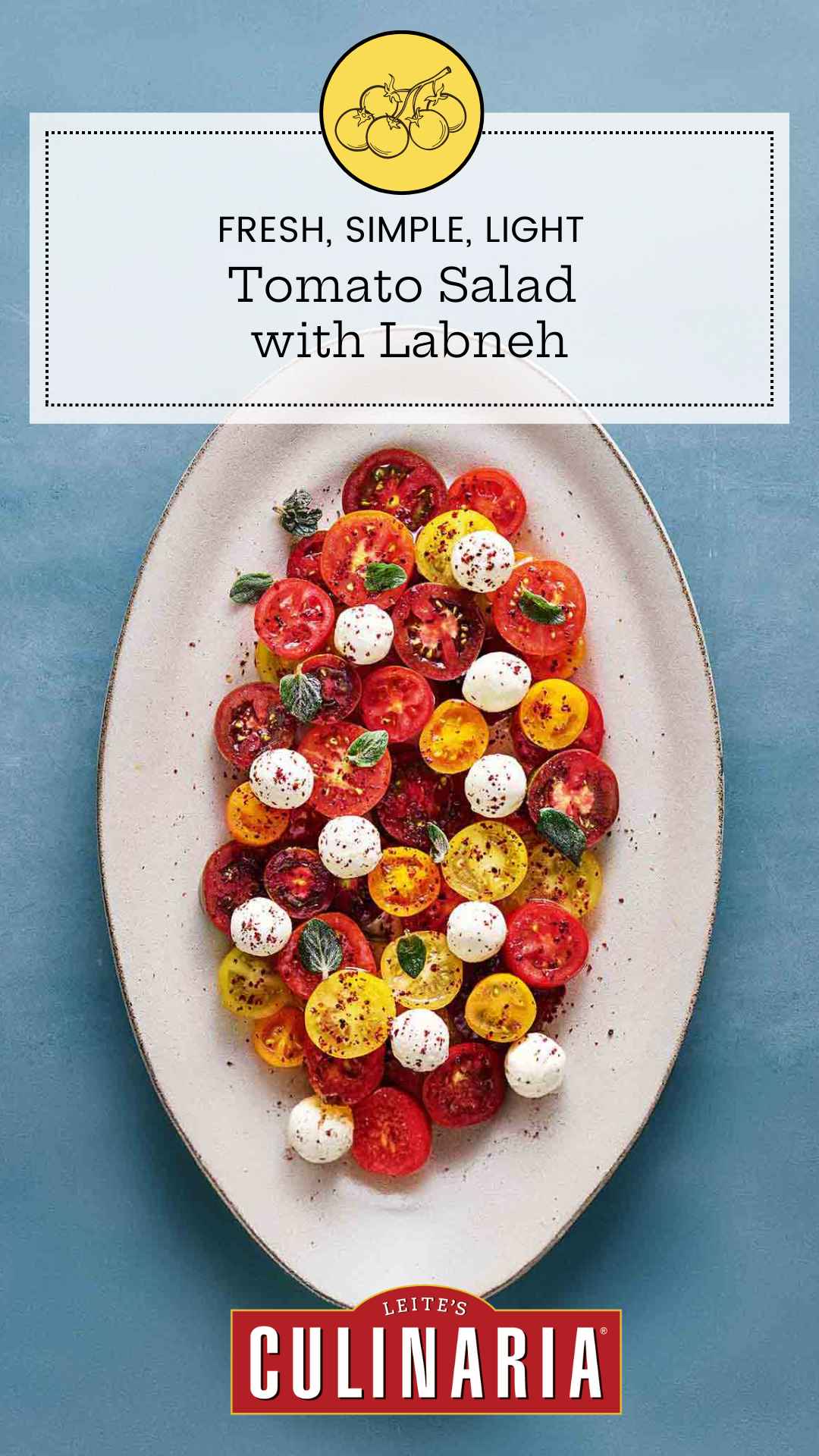
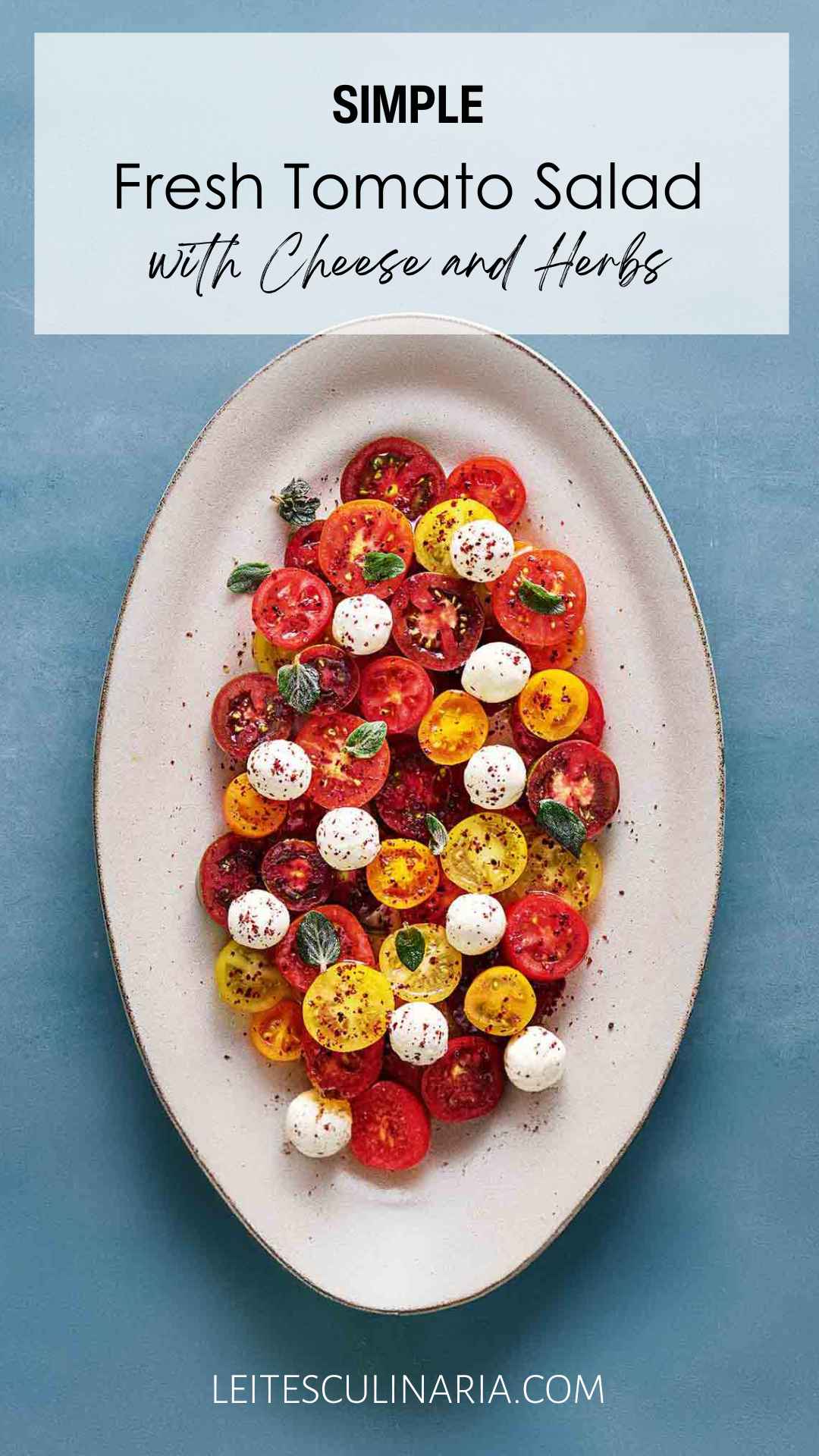
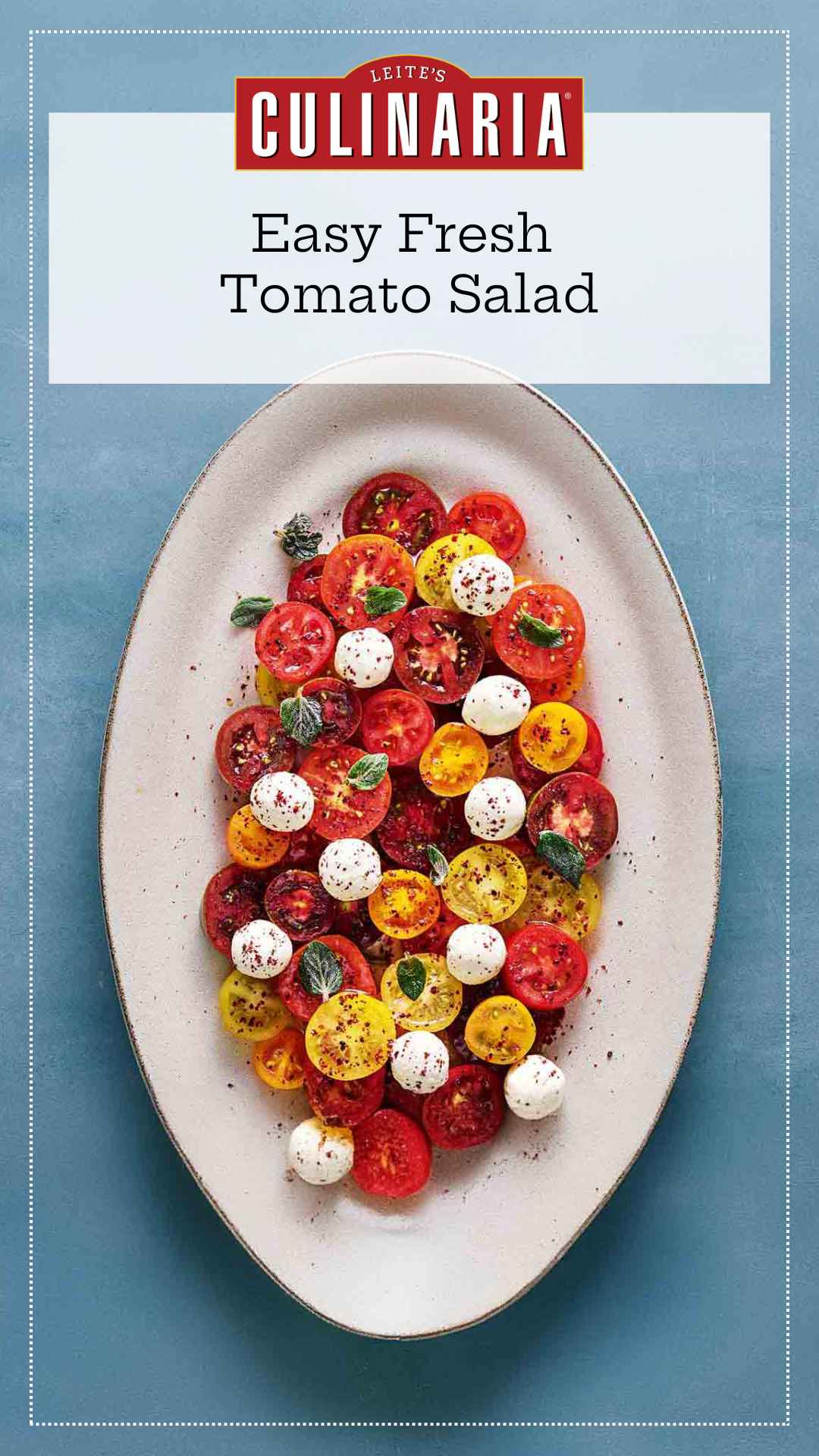
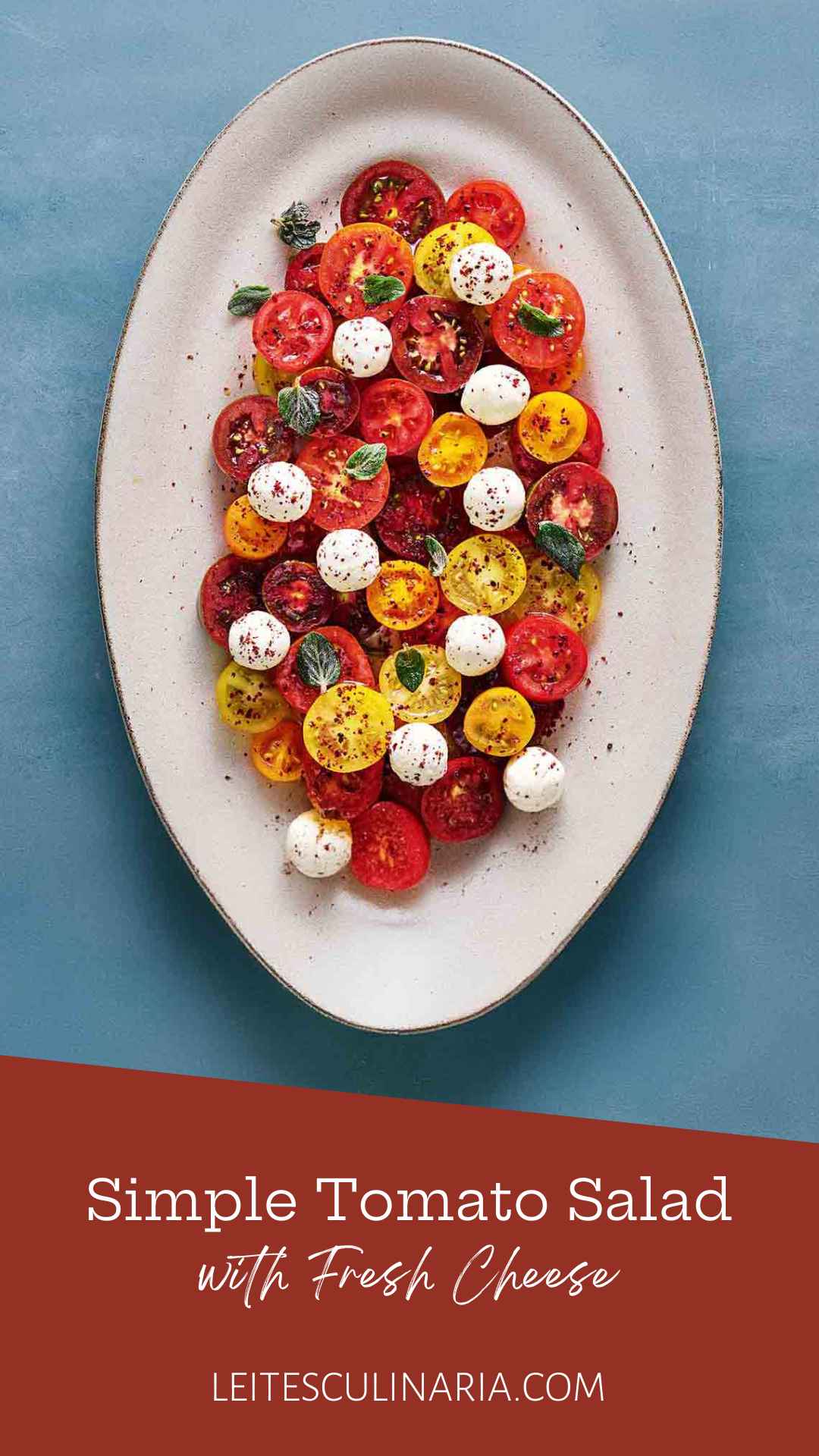
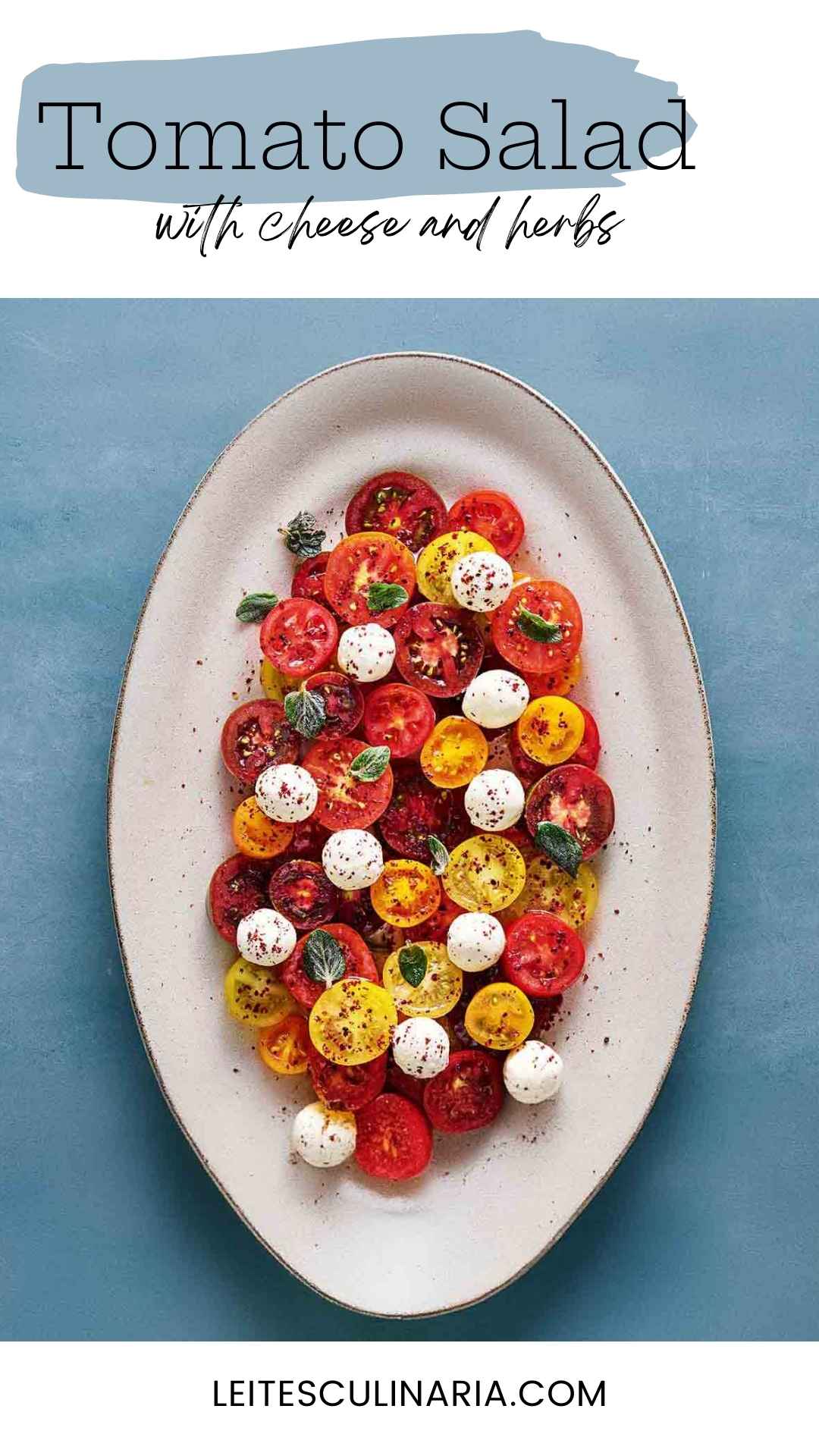
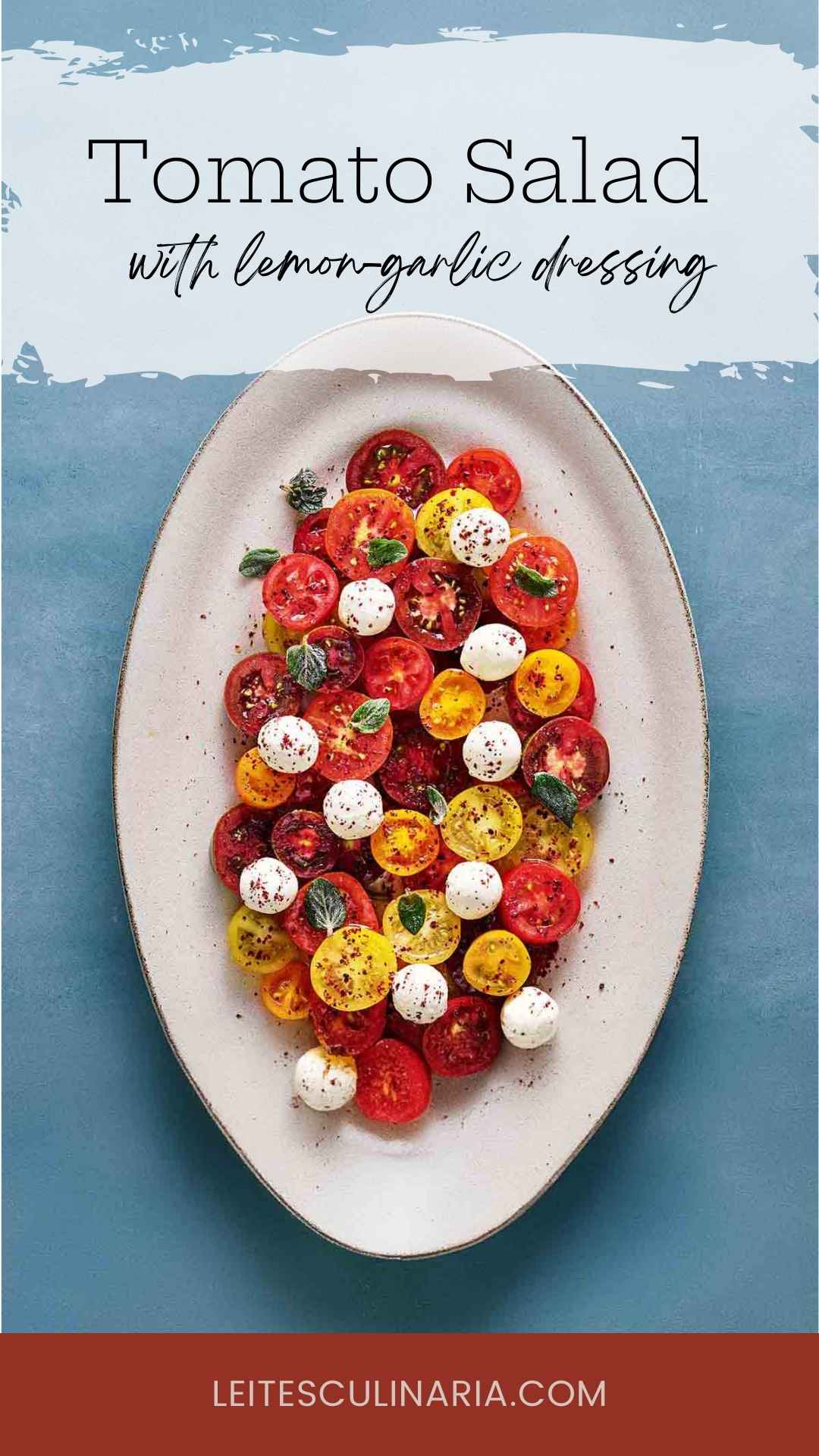












Hello, do you know if the labneh can be made ahead of time and saved for a few days? Maybe kept in olive oil or water in the fridge? Thanks
Ca, the labneh will be fine for at least a few days, though likely longer if stored in a sealed container in the refrigerator.
Thanks for the quick response. I have a carton of labneh in the fridge. I’ll try it out tomorrow. Ca
Great, Ca. I can’t wait to hear how it turns out!